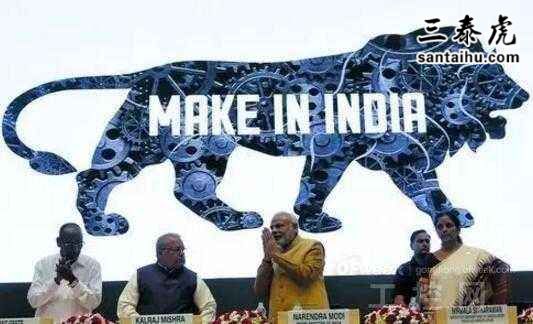Is the quality of products made in India better than those made in China?
印度制造的商品质量比中国制造的好么?

QUORA网站读者评论:
来源:三泰虎 https://www.santaihu.com/46116.html 译者:Joyceliu
外文链接:https://www.quora.com/Is-the-quality-of-products-made-in-India-better-than-those-made-in-China
Anup Mohan, Indian, Working in China for over 1.5 Years
I am not sure about the perspective that is being considered here. For example, an Indian will definitely say, Indian Product’s quality is better and a Chinese will counter the argument.
However, from a global perspective (read on to understand this better), there is no clear winner here. This is going to be a little complex to understand. This is primarily due to manufacturing ecosystem variances across both the countries. That happens due to the following factors:
Product Variation
Indian Economy is less reliant on exports as compared with China. Thus, Indian products are primarily made to cater to Indian market. This brings a standard to follow for Indian companies by not creating multiple variances of a single product. Whereas, Chinese Products are exported all over the world. This brings a competitive advantage for Chinese Manufacturers in terms of creating large number of varieties for a single product.
In China, if you want to buy a product, you can buy it for RMB 10 as well as RMB 1000 (for example). Since, they have to cater to different countries with different legal requirements and culture set-ups, they need to create different varieties of a single product. The same can be verified by simply accessing B2B E-commerce websites like Alibaba.com.
Personally, I have been to a factory in China which manufactures LV bag, but the same factory also manufactures bags that are sold on the street. The only difference is the ones that are sold on the street won’t have a LV tag. The quality is exactly the same.
我不确定大家在这里考虑的角度。例如,印度人肯定会说,印度产品的质量更好,而中国人会反驳这种说法。
然而,从全球的角度来看(请继续阅读以更好地理解这一点),这里没有明显的赢家。理解起来有点复杂。这主要是由于两国制造业生态系统的差异。这是由于下列因素造成的:
产品差异化
与中国相比,印度经济对出口的依赖程度较低。因此,印度产品主要是为了迎合印度市场。这为印度企业提供了一个标准,即不要为单一品种生产多种类型。然而,中国产品出口到世界各地。这给中国制造商带来了竞争优势,因为他们可以为单一产品创造大量的品种。
在中国,如果你想买一件商品,你可以只花10元,也可以花上1000元(比如)。因为他们必须迎合不同国家不同的法律要求和文化,他们需要生产不同种类的单一产品。访问B2B电子商务网站如Alibaba.com就可以验证这一点。
就我个人而言,我去过中国一家生产LV包的工厂,但是这家工厂也生产街头销售的包。唯一的区别是在街上卖的那些没有LV标签。但质量是完全一样的。

Economies of Scale
Since China produces more number of goods, it brings their total cost down substantially. For example, if you set up a factory for $100,00, the cost of the first good you would produce will technically be $100,000. However, the more you make, the more your per unit cost decreases. China is an unbeatable champion of Economies of Scale.
Economies of Scales brings a substantial impact on the complete manufacturing ecosystem. This includes constant improvement of all production related processes including the quality. This is relatively simple to understand. The more you make, the more you understand, the more improvements you can make, the better your products’s quality will be. Therefore, in terms of manufacturing efficiency, for specific component/sub-component of a production/manufacturing process, it is practically impossible to rival China.
由于中国生产更多的商品,总成本大大降低。例如,如果你以10000美元的价格建立一个工厂,你生产的第一件商品的技术成本将是10万美元。然而,你生产的越多,单位成本下降的越多。中国是规模经济的不败冠军。
规模经济对整个制造业生态系统产生重大影响。这包括不断改进所有生产相关的过程,包括质量。这是相对容易理解的。你做的越多,你就越了解,你能做的改进越多,你的产品质量就会越好。因此,就制造效率而言,几乎不可能与中国匹敌。
This can be verified by how Chinese Companies are setting up factories outside China due to increasing labor cost, more evidently in mobile phones manufacturing. Basically, they have mastered manufacturing on a such a magnanimous scale that now their expertise is in demand across the World, from any country that wants to focus on manufacturing, let alone India.
Manufacturing Outsourcing
Have you heard this term called ‘OEM/OBM/ODM’?
这一点可以从中国企业在海外设立工厂的方式得到证实,原因是劳动力成本不断上升,尤其是在手机制造业。基本上,他们已经以如此大的规模控制了制造业,以至于现在全世界都需要他们的专业技能,任何一个想要专注发展制造业的国家都需要,更不用说印度了。
制造业外包
你听说过“OEM/OBM/ODM”这个词吗?
China’s manufacturing is so advanced that it follows a concept of ‘Manufacturing Outsourcing’. Just like how India is the so called ‘Outsourcing Hub’ for services, China is the ‘Outsourcing Hub’ for manufacturing. Just like how most of the customer services centres for English Speaking countries are based in India, their manufacturing is based in China. This is how manufacturing works in China.
This implies that a single factory in China may make products for hundreds of clients from all over the world. Each client has specific requirements, specific quality standards, specific designs, specific delivery timelines, specific budget, etc.
This makes their products more global, more advanced and more diverse.
中国的制造业非常先进,遵循着“制造业外包”的理念。就像印度被称为服务外包中心一样,中国也是制造业的外包中心。就像大多数以英语为母语的国家的客户服务中心都设在印度一样,它们的制造业也设在中国。这就是中国制造业的运作方式。
这意味着中国的一家工厂可以为来自世界各地的数百个客户生产产品。每个客户都有特定的要求,特定的质量标准,特定的设计,特定的交付时间,特定的预算等。
这使得他们的产品更全球化、更先进、更多样化。
Quality ‘Premium’
The question of quality doesn’t arise in 50% cases primarily because they are branded products. For ex, companies like Apple, Sony, etc, they all make their products in China. However, it is very unlikely that you will face quality problems with their products. This happens because these companies give clear quality standards to follow for their Chinese OEMs. The same company is may be, making products for another company as well, but better quality comes at a cost.
Is every brand prepared to pay a premium for better quality products?
质量“溢价”
质量问题在50%的情况下不会出现,主要是因为它们是品牌产品。对于苹果、索尼等公司来说,他们的产品都是在中国生产的。然而,你不太可能会遇到他们产品的质量问题。之所以会出现这种情况,是因为这些公司为其中国代工厂商制定了明确的质量标准。同一家公司可能也在为另一家公司生产产品,但更好的质量是要付出代价的。
每个品牌都准备好为更好的产品支付溢价吗?
Customer Awareness
Quality ‘Premium’ is the reason why Chinese products have a bad brand in the market. In most cases, specially in Indian cases, our whole-sellers who source products from China, generally source the cheapest products possible. They know this is what Indians want. And, they make good money on it. However, similarly, an American Product sourcer may not do the same, since he knows that there are stricter quality norms to follow in the US.
When customers are well aware of their rights and when sellers know the repercussions of selling sub-standard products, it is less likely that a country will have access to ‘low-quality’ products.
客户意识
质量“溢价”是中国产品在市场上口碑不佳的原因。在大多数情况下,特别是在印度,我们从中国采购产品的所有卖家,通常都尽可能地采购最便宜的产品。他们知道这是印度人想要的。而且,他们从中赚了很多钱。然而,同样的,美国的产品供应商可能不会这么做,因为他知道美国有更严格的质量标准。
当消费者充分意识到自己的权利,当卖家知道销售不合格产品的后果时,一个国家获得“低质量”产品的可能性就会降低。
Infrastructure & Transportation play the most important role for products to have a better availability in the market. China is a clear leader in that segment.
基础设施和交通运输对产品在市场上有更好的可用性起着最重要的作用。中国在这方面明显领先。
I remember in 2013, I was traveling in Egypt. I went to a souvenir market and I was shocked to know that each and every souvenir was made in China. I asked one shopkeeper, how do you get everything from China, he replied ‘it comes on road my friend. There is a bridge that connects Asia & Africa, many trucks come from China on that bridge’.
This situation is definitely improving but globally speaking, it still needs much more time for India to make its dent, specially when it’s total exports have been relatively stagnant.
我记得2013年,我在埃及旅行。我去了一个纪念品市场,得知每一件纪念品都是中国制造的,我感到很震惊。我问一个店主,你怎么能从中国买到所有东西?他回答说,朋友,这些东西都是通过陆地运输来的,我们有一座连接亚洲和非洲的桥,许多中国货车通过这座桥到达这里。
这种情况肯定在改善,但从全球范围来看,印度仍需要更多时间来削弱自己的实力,尤其是在出口总额相对停滞的情况下。
此文由 三泰虎 编辑,未经允许不得转载!:首页 > 印度人看中国 » 印度制造的商品质量比中国制造的更好吗